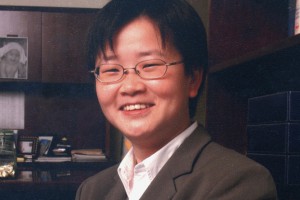“We are fully saturated, but the orders keep coming very strongly and some products are on allocation,” said Pasquale Pistorio, CEO of STMicroelectronics, who recently upped ST’s capex for 2004 from $1.6bn to $2.2bn. “There isn’t enough equipment, in the last quarter of last year, everyone was rushing to buy equipment.”
Agreeing with Pistorio was Stuart McIntosh, president of ASML, the leading supplier of semiconductor lithography tools. “We’ve put prices up, and lead-times up, and customers complain, but they’re chasing us for the equipment,” he said.
“The industry’s investment plans are limited by the ability of the equipment industry to deliver,” said Malcolm Penn, CEO of Future Horizons. “The equipment companies were still laying off people in Q4. It will be difficult for them to produce enough to meet demand.”
That means the recovery is unlikely to be killed off by over-investment this year. “Not this year; but next year – maybe,” said Pistorio. “This year the equipment people can’t deliver enough for the industry to over-invest, but next year could be different.”
The conjunction of saturated capacity and equipment shortage can mean only one thing: rising prices. “We predicted 32 per cent industry growth for this year,” said Penn, “and we will probably be revising that later in the year – upwards. The growth can’t be less than 32 per cent.”
So much for triumph. Despair came from a number of distinguished US technologists who believe the industry’s process technology is running out of steam.
“Scaling is already dead, and no one has noticed it’s not breathing and the lips have turned blue,” said Dr Bernie Meyerson, chief technologist at IBM Systems and technology group, adding, “somewhere between 130nm and 90nm everything stopped working.”
“Yields were so bad at 0.13µm that many companies delayed their product introductions by a year,” said Aart de Geus, CEO of Synopsys.
“Yield curves are now being pushed down below what were considered acceptable,” agreed Wally Rhines, CEO of Mentor Graphics.
“What is really putting us through the loop is leakage current,” said de Geus, “the transistor, which was a switch, is turning into a non-linear resistor.”
It was because scaling wasn’t producing the traditional benefits of lower power with better performance – because of current leakage – that designers pumped more power into the circuits. This resulted in soaring power density.
That cannot go on forever. “We’re getting to the end, guys,” said Meyerson. Whereas 90 per cent of the performance gain used to come from scaling, now 60-70 per cent of the advantage has to come from innovative techniques to get around the power density ceiling.
This has big implications for the fabless/foundry business model which can no longer just rely on buying the latest tools to get the benefits of a shrink.
“Now that the fabless people can only get 40 per cent of the performance benefit, they need to innovate to get the other 60 per cent,” said Meyerson. “The consequences for the industry are pretty dire.”
Renesas Technology’s senior v-p Hideo Inayoshi, pointed the finger: “I think the ITRS (International Technology Roadmap for Semiconductors) roadmap is the bad guy – metal pitch doesn’t mean anything from now on.”
Meyerson agreed. “When they drew those roadmaps you wonder where the physicists were,” he said.
For ST’s Pistorio, Meyerson’s prognosis was: “Exciting, stimulating and scary.” However he didn’t subscribe to the doom and gloom. From what our technologists tell me, I think the industry knows how to master 90nm,” said Pistorio. “Many companies have been producing samples for 90nm, and I don’t think 90nm will be a dramatic change from the traditional tough generational evolution.” ST plans volume production on 90nm in Q4 2004 or Q1 2005.
Pistorio is similarly confident about 65nm. “Nothing has come to my ears that there is a stumbling block,” he said. “Speaking with my colleagues, all I hear is that there are the normal difficulties of any node.”
For the triumphalists at IEF2004, the good times will roll for a year or two. “It will be at least 2006 before we see the market adjust itself again,” said Future Horizons’ Penn. “Excess capacity will cause the next cyclic adjustment.” He expects a tough year in 2006. “We’ve never had a soft landing in the history of the industry,” he said.
For the despairing, there are a few possibilities, pointed out Ericsson’s Jan Johansson: carbon nanotubes, nanowires, nanotweezers, quantum dots, photonic crystals, nanomagnetics, nano photoluminescence and nano peashooters.
Christoph Kutter, senior v-p of Infineon Technologies, also talked of the promise of carbon nanotubes, but it’s not going to save the industry in the short-term. When asked by Synopsys’ de Geus when the first product containing nanotubes would be on the market, Kutter replied: “Nanotubes could be used in chips – perhaps for interconnect – in five years to ten years time.”
So the semiconductor industry does not seem to have much of an idea about where it’s going. But it’s always been like that.
 Electronics Weekly Electronics Design & Components Tech News
Electronics Weekly Electronics Design & Components Tech News


